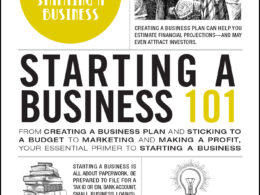The following is excerpted from “Legacy in the Making” by Mark Miller and Lucas Conley, p.19-26 (McGraw-Hill Education 2018).
Reshma Saujani isn’t fazed by failure; she’s inspired by it. The founder of Girls Who Code, a nonprofit on a mission to equip girls with computing skills, and the author of “Women Who Don’t Wait in Line,” Saujani found her way into computer programming as a result of personal ambition that initially fell short. In fact, looking further back, it was someone else’s failure that first inspired her to take the path she is on today.
“I saw Hillary Clinton give her first concession speech when she ran her first campaign to be president of the United States,” Saujani recalls. “She said something very inspiring: ‘Just because I failed doesn’t mean you shouldn’t try, too.’”
The year was 2010. Disillusioned with her lucrative job in the financial services industry, Saujani, whose parents emigrated to the United States from Uganda in the 1970s, decided to quit and run for the U.S. House of Representatives.
“Seeing everything this country did for my family inspired me to want to give back someday through public service,” she says.

Advised to wait her turn by the political establishment, Saujani, just 34 years old at the time, forged ahead, leading an inspired campaign. She captured an endorsement from the “New York Daily News” and received several mentions in the “New York Times,” and CNBC touted her race as one of the hottest in the country. Despite high hopes, however, Saujani was clobbered in the primary election, earning just 19 percent of the vote.
“I had convinced a lot of people I was going to win,” she recalls. “On Election Day, I remember clutching my father’s hand, watching the television screen.”
Broke, feeling humiliated, and ostracized by those in her own party who had advised her not to run in the first place, Saujani could have given up and returned to her old job and its ample paycheck. Instead, she assessed the highs and lows of her campaign, looking for ways to rechannel her ambition to be of service. Among the highlights: Saujani was a pioneer in leveraging new technologies to get voters to the polls.
Though technology did not win her the primary, Saujani’s focus on the field had paid off in various other ways. As the first to use apps such as Square and NationBuilder in the political sphere, she introduced new ways to raise funds and inspire voters. Despite her underdog status, those innovative efforts garnered national media attention and generated $1.6 million in donations. Most notably, drawing the public’s attention to new job opportunities in the tech sector made her aware of a glaring gender imbalance in that industry.
“When you run for office, you end up visiting a lot of schools,” she explains. “I was going to lots of robotics labs and computer science classes, and I would often see a bunch of boys all clamoring to be the next Steve Jobs or Mark Zuckerberg. I remember thinking to myself, ‘Where are all the girls?’ and that question stayed with me.”
Related: Moz Founder and Former CEO Rand Fishkin Shares Startup Cheat Code
Many of the stories we hear at The Legacy Lab begin with nagging questions such as the one that stuck with Saujani. Nagging questions are a telltale sign of a nascent personal ambition. Such thoughts tend to be loaded with personal significance even when they seem unsolvable. In fact, these lingering, seemingly unsolvable questions can be ideal for starting a modern legacy brand.
In business and in life, short-term thinkers tend to take the easy way, dodging obstacles and looking for the path of least resistance. Hooked on instant gratification, they settle for shortcuts. Averse to criticism and failure, they avoid risk. Those with a longer view understand that the reward is generally commensurate with the effort expended. One “personal” way modern legacy builders stay focused on their long-term ambitions is by reframing the obstacles in their paths as opportunities. One might call this “taking the hard way,” but there’s no better method for creating lasting change than paving your own way while others stay on the beaten path. After all, modern legacy building is as much a way as it is a where.
Saujani, for example, is not a professional software coder, though today tens of thousands of young women have her to thank for introducing them to the field. After losing the primary, Saujani reflected on the paucity of women she’d seen in computer programming. Statistically, the long-term picture wasn’t good.
By 2020, there will be 1.4 million jobs available in computing-related fields. U.S. graduates, however, are on track to fill only 29 percent of those jobs. Worse, unless something changes, only 3 percent of those jobs will go to women.
This, Saujani realized, was her obstacle and her opportunity. Technology presents an incredible career opportunity for the next generation of women if only they understand their own potential and can find a way in. By helping introduce girls to coding—in essence, blazing a path through an obstacle she encountered in her personal path and creating an opportunity for herself and others—Saujani saw a way to give back and drive the kind of societal change she had hoped to make in politics.
Borrowing a friend’s conference room for office space, Saujani redirected her campaign skills and passion for public service into launching Girls Who Code. Her modern legacy ambition: to “inspire, educate, and equip girls with the computing skills to pursue twenty-first-century opportunities.”
“I spent about all of 2011 and half of 2012 working to understand the problem: Why was there a lack of women in the field of computer science?” she recalls. “My passion for this topic was rooted in creating greater economic opportunity. In the technology sector, where jobs were growing, where a person could make a lot of money as a software engineer, where the related income could help to move a family up to the middle class, why were women so badly underrepresented?”
Saujani began to explore what it would take to put together a curriculum aimed at young women. She focused on identifying women with an interest in technology and inspiring them to pursue coding. The trends weren’t in her favor. In 1984, 37 percent of all computer science graduates were women. Today, the number is about 18 percent. In fact, only 26 percent of advanced placement (AP) computer science test takers are women. Nevertheless, at a time when the majority of college students are women, the majority of those in the labor force are women, and more than 40 percent of breadwinners are women, Saujani saw the lack of women in coding as a huge opportunity.
“It is not an aptitude issue,” she points out. “Girls outperform boys in math and science. The problem is that from the time they’re very young, girls are actively choosing to not participate in the field.”
In 2015, only about 10,000 women in the United States graduated college with a degree in computer science. Only 1 in 10 American schools even offered computer science as a major. Recognizing that girls are 40 percent more likely to major in computer science if they take the AP computer science exam, Saujani began looking for ways to introduce girls to computer programming at a younger age—specifically, between 13 and 17—before the AP exam.
“At Girls Who Code, we are offering an alternative education opportunity through an after-school program and a summer program,” she says. “We are stepping in and giving girls experience with and exposure to computer science education starting in high school. We are also working to set a high expectation that they’ll major in it in college and then go to work in the industry.”
Saujani is making headway fast. Over the last five years, Girls Who Code has grown into a national movement, with sponsors and programs in all 50 states.
“Between our summer immersion program, the Girls Who Code Clubs, the book series, and creating platforms for our alumni to connect and communicate with each other, we are building a fully networked and supported organization,” she says. “We introduce girls to the topic and impart lifelong knowledge. We give them access to internships. We create a sisterhood of support to help make sure that the girls do not give up. When the girls run into cultural or gender barriers that they will inevitably face and feel deterred from wanting to do this anymore, we have role models who can encourage them along. We are building this one piece at a time, creating strong foundations for a more sustainable solution.”
Sign Up: Receive the StartupNation newsletter!
What started with 20 girls in 2012 has grown to more than 50,000. Today, Girls Who Code offers many of its students the opportunity to work at major tech firms in their own regions. An impressive 90 percent of the program’s summer alumni intend to major or minor in computer science.
“When I was running for office, I always felt like I was running up a hill; it was very hard to catch a break,” says Saujani. “In contrast, with Girls Who Code, it has so much meaning in it that a lot of people want to help support it by building this with us. It’s very rewarding to see and be a part of.”
By adapting her personal passions to new circumstances, Saujani stands out as an example of how modern legacy builders create opportunities out of the obstacles they confront in their personal lives.
When her political career stalled and she felt there was no path to follow, Saujani blazed her own trail, ultimately creating a way forward for others and herself. At times impeded and inspired by failure, Saujani found her own way—the hard way—to build her modern legacy.
“I am probably making more impact, with lasting implications, than if I had been elected,” she says. “Being rejected, feeling upset, failing, and seeing dreams not work out should never break you. From one dream can emerge new, better dreams filled with amazing possibility.”
In building your modern legacy, how can you take the hard way?
When Saujani set out to change computer programming, she knew very little about the industry. Despite that, she identified an obstacle that was important to her and blazed a path through it that others could follow.
Can you do the same thing yourself?
First, identify an obstacle you want to solve. Seek out the problems no one has been able to fix and don’t let the failure of others prevent your success. The more personal that obstacle is to you, the more willing you will be to invest the hard work necessary to create lasting change rather than take the expedient way out.
If you have trouble identifying an obstacle, let your everyday observations be your field research. Rather than letting a lack of experience stand in your way, how could fresh eyes help you spot obstacles that others take for granted? Begin with your career, community, and hobbies. Any obstacle that draws your attention probably will be personal to you at some level.
Though Saujani set out with a long-term personal ambition to give back through public service, she found herself drawn to a largely overlooked problem she observed on the campaign trail: introducing girls to computer science. Having no experience in the tech industry would have been an easy excuse for ignoring such a tough challenge, but instead, Saujani took the hard way, cracked the code, and turned an obstacle into an opportunity.
Like Saujani, the next modern legacy builder in this chapter was self-assured enough to harness a personal ambition in the name of solving a problem. In this case, though, the problem was even closer to home.
“Legacy in the Making” is available now at fine booksellers and can be purchased via StartupNation.com.






